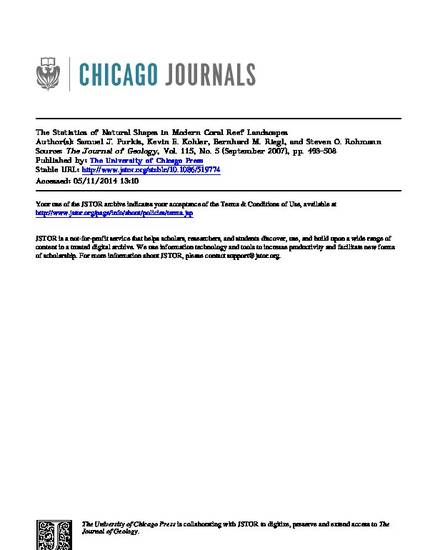
Spatial heterogeneity is a fundamental characteristic of modern and ancient depositional settings, and the scaling of many carbonate environments has been shown to follow power function distributions. The difficulty in obtaining information on the horizontal persistence of sedimentary lithotopes at the basin scale has, however, hampered evaluation of this fact over larger geographic areas. In recent years, large‐scale maps of reef facies derived from remotely sensed data have become widely available, allowing for an analysis of reef‐scale map products from 26 sites spread through four reef provinces, covering >7000 km2 of shallow‐water habitat in the U.S. territorial Pacific. For each site, facies maps were decomposed to polygons describing the perimeter of patches of differing sedimentologic/benthic character. A suite of geospatial metrics quantifying unit shape, fractal dimension, and frequency‐area relations was applied to investigate the intra‐ and intersite variability. The spatial architecture of these reef sites displays robust fractal properties over an extended range of scales with remarkable consistency between provinces. These results indicate the possibility of extrapolating information from large to small scales in various depositional environments.
Available at: http://works.bepress.com/bernhard-riegl/177/
